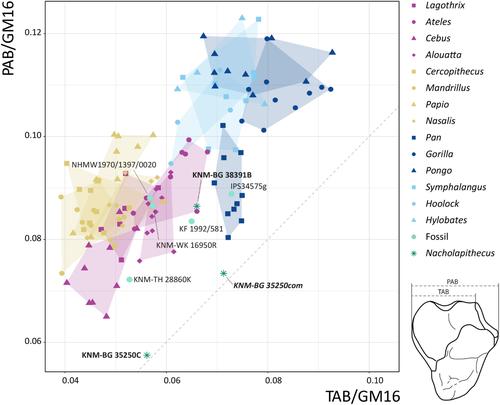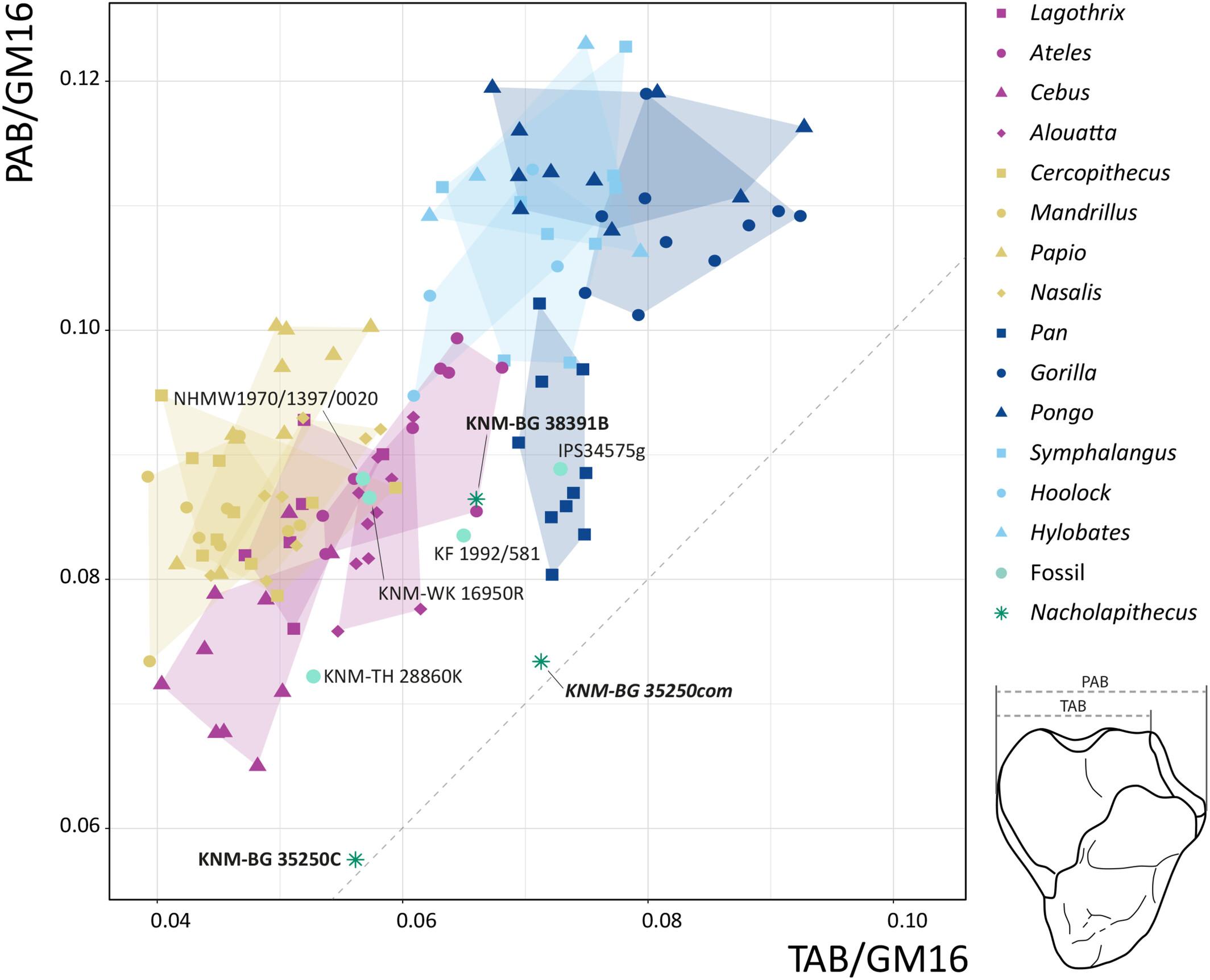New quantitative analyses of the Nacholapithecus kerioi proximal ulna confirm morphological affinities with Equatorius and large papionins
Abstract
Objectives
The elbow of Nacholapithecus has been extensively described qualitatively, however its ulnar morphology has never been the focus of an in-depth quantitative analysis before. Hence, our main aim is quantifying the proximal ulnar morphology in Nacholapithecus and exploring whether it is similar to those of Equatorius and Griphopithecus as previously reported.
Materials and Methods
We compared Nacholapithecus proximal ulnar morphology with a sample of extant and extinct anthropoids through principal component analysis and agglomerative hierarchical cluster analysis. Moreover, we calculated the Cophenetic Correlation Coefficient and checked for taxonomical group mean differences through MANOVA and pairwise post-hoc comparisons, as well as the phylogenetic signal in the variables used.
Results
The Nacholapithecus ulna displays a moderately long and relatively narrow olecranon, a relatively wide trochlear surface-radial notch width, and a relatively thin sigmoid notch depth. These features resemble those of large papionins and chimpanzees, and some extinct taxa, mainly Equatorius.
Discussion
Results presented here reinforce previous inferences on the functional morphology of the Nacholapithecus elbow, showing adaptations for general quadrupedal behaviors. However, other derived features (e.g., a relatively wide trochlear surface) might be associated with the ape-like traits described for its distal humerus (e.g., wide trochlear groove), thus displaying a combination of primitive and derived features in the proximal ulna. Finally, affinities with large papionins could suggest the presence of some terrestrial habits in Nacholapithecus. However, the lack of evidence in the rest of the skeleton prevents us from suggesting terrestrial affinities in this taxon in a conclusive manner.



 求助内容:
求助内容: 应助结果提醒方式:
应助结果提醒方式:


